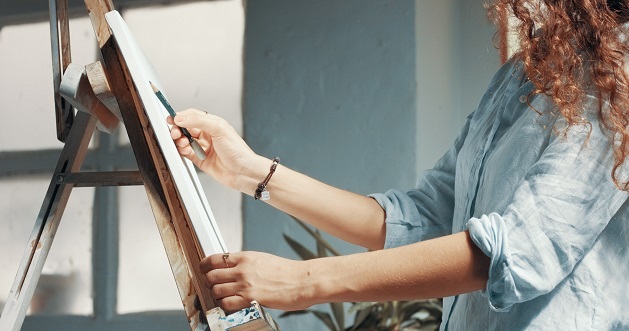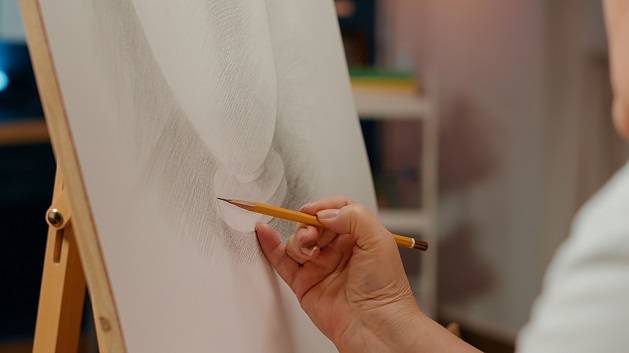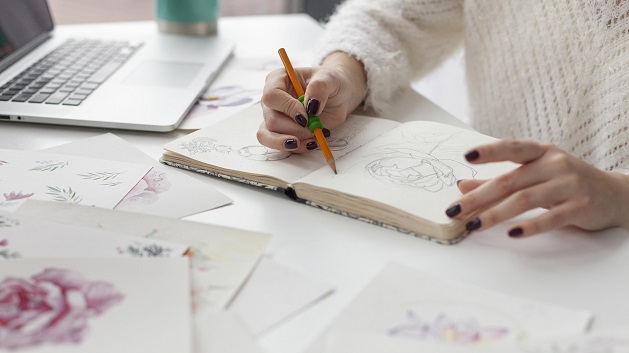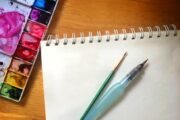Whether you’re an experienced artist or just starting out on your creative journey, there’s always room for growth and improvement. Art has an extraordinary power to captivate, inspire, and transform. It lets you explore the depths of your imagination and communicate emotions that words can’t capture. But honing one’s artistic skills requires dedication, practice, and a willingness to embrace growth.
So, it’s time to break free from self-doubt and embrace the limitless possibilities that lie at your fingertips. Let’s discover how to overcome creative blocks, cultivate inspiration, and improve your skills!
Use a Drawing Board

One great tool for artists of all levels is a versatile online drawing board. Whether you’re sketching, painting, or doing calligraphy, their angle adjustment helps you create beautiful works of art while sitting comfortably in your seat. You can create detailed illustrations or practice sketching without having to worry about smudging or smearing your work. You’ll have more control over your artwork as you can adjust the angle and height of the board according to your preference.
Additionally, an online drawing board helps you practice your skills without worrying about back discomfort. You can draw comfortably for hours at a time without worrying about straining your back or neck. The adjustable angles and ergonomic design make it easy to find the most comfortable position for you while drawing.
How Do I Choose a Drawing Board?
Drawing boards come in various sizes, materials and are extremely versatile. Here are a few factors you should consider when looking to buy one to help you on your creative journey:
-Size: It should be large enough to accommodate your work, but also small enough so you can carry it around. Not all boards are created equal, so make sure you measure your workspace and pick one that fits comfortably in the area;
-Material: Make sure the board you pick is sturdy and durable, so it can withstand a good amount of pressure. Quality beech wood or tempered glass are two excellent options;
-Angle adjustment: One of the greatest things about using a drawing board is the ability to change your drawing angle to fit your needs. This way you won’t put as much stress on your neck and back. Look for a board with a range of angle adjustments and select the one that best suits your needs;
-Additional features: Think about any extra features that will come in handy for you. Some models include built-in LED lights or rulers, while others have additional compartments for your pencils, brushes, and other tools. Consider your individual needs and choose a board with the right features!
Create a Routine
A routine provides structure, discipline, and consistent practice, which are crucial for growth and improvement. This is key in all things in life, including eating healthy, losing weight, improving at a sport, etc. It’s important to set aside enough time for your artistic pursuits. Treat it as an appointment with yourself, just like any other commitment. Find a time slot that works best for you, whether it’s early in the morning, during your lunch break, or in the evening. Create a comfortable and inspiring workspace for yourself, and get to work!
Learn from Your Mistakes

It’s through your mistakes that you gain valuable insights and grow as an artist. They happen to everyone, regardless of your skill level or experience. Rather than viewing them as failures, try to shift your perspective and see them as stepping stones towards improvement. When you encounter a challenge or make an error in your artwork, take a moment to analyse it. Ask yourself questions like, “What went wrong?”, “Why did it happen?”, and “What can I learn from this?” This way, you gain a deeper understanding of the process. It could be a technical error, such as using the wrong brushstroke or applying colours incorrectly. Or it could be a compositional issue, where the elements of your artwork didn’t come together as you envisioned. Once you identify the mistake, don’t be too hard on yourself. Remember, it’s a learning opportunity, not a reason to discourage yourself.
Decide on One Medium
When you focus on a single medium, you can fully master it. You can delve deep into the technical aspects, experiment with different techniques, and explore the unique possibilities of the paints. This leads to a profound understanding and command of that medium and lets you create more refined and impactful artworks. This will help you build a cohesive body of work and develop a niche audience or market for your art.
Set Goals for Yourself

Imagine you’re embarking on a road trip. You can’t expect to reach your destination in a single leap, right? Instead, you plan your journey by setting smaller milestones along the way. The same concept applies to improving your art. By setting smaller goals frequently, you’ll maintain motivation and track your progress more effectively.
First, identify what aspect of your art you want to improve. Whether this is mastering a specific technique, exploring a new medium, or even enhancing your understanding of colour theory, break it down into smaller, achievable tasks. Let’s say you want to improve your figure-drawing skills. Your initial goal could be to practice sketching basic human anatomy. Break it down further and practice one specific body part at a time, like hands or facial features. Then, set a schedule or routine for yourself, dedicating a certain amount of time each day or week to work on this goal!


